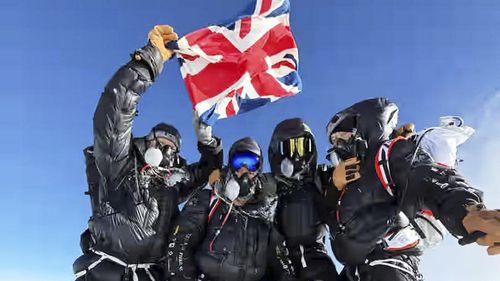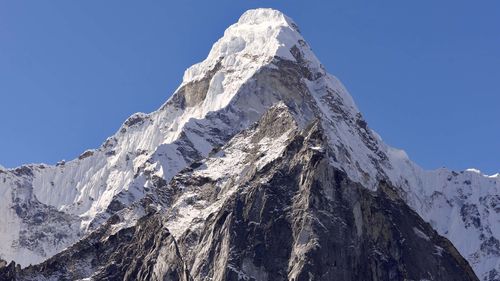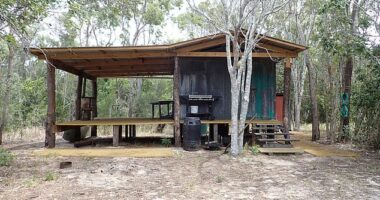An expert mountain guide successfully put four of his clients on top of Mount Everest yesterday, less than a week after they left London, one of the fastest ascents on record of the world’s highest peak.
The four British climbers flew from London to Kathmandu on May 16 and reached the 8849-metre summit yesterday morning local time, according to Lukas Furtenbach, who has been using different methods over the past five years to speed up the climb.
The climbers had put in months of preparation, training in hypoxia tents and undergoing xenon gas treatment at a clinic in Germany before heading to Nepal.

“Xenon improves the acclimatisation and protects the body from altitude sickness and the effects from the hypoxic environment,” Furtenbach told The Associated Press from the base camp at Everest.
“Xenon makes the climb safer.”
He said all the climbers were safe and returning back to lower camps after the successful ascent.
Climbers normally spend weeks at base camp to acclimatise to the higher altitude.
They make practice runs to the lower camps on Everest before beginning their final attempt on the peak, so that their bodies are prepared for the low pressure and lower level of oxygen available.
The new method is likely to reduce the time climbers spend out of their home countries and cut the number of days they need to take off work, also cutting down on expenses.

Nepal does not have any rules on how many days climbers must spend acclimatising or making practice climbs.
Their permits, which cost $US11,000 ($17,000) each, are valid for 90 days.
Climbing season normally wraps up by the end of May, when the weather deteriorates and monsoon season begins.
The ropes and ladders fixed to the mountain are then pulled out.
Hundreds of foreign climbers have been given permission to climb Everest this year.
Roughly half of them have succeeded and the remaining will likely attempt their climb within the next few days.







